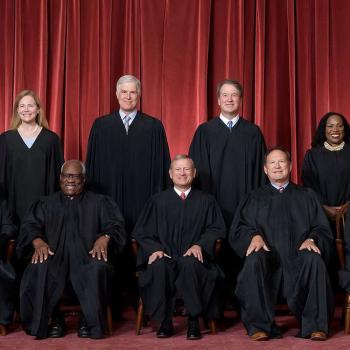Parents have long worried about the effects of “peer pressure” on their children. Experts call it “social contagion” and are seeing it as a factor in the jump in the number of transgender teenagers. But it also can account for other cultural syndromes.
A study of transgenderism among high school students has identified a major reason why so many young people are identifying as a different gender or as being “nonbinary”: “social contagion.” That is, when one member of a friendship group goes trans, other members often do too, an effect heightened through peer pressure.
Brown University researcher Lisa Littman published an article in the online peer-reviewed science journal Plos One* entitled Parent reports of adolescents and young adults perceived to show signs of a rapid onset of gender dysphoria. It’s well worth reading in its entirety, and, indeed, it’s quite readable for a technical paper in the socials sciences.
She was investigating some puzzling phenomena. Previously, most cases of gender dysphoria–confusions about gender–happened in children before they reached the age of puberty. And mostly it involved little boys who wanted to be girls, a condition that usually resolves itself. But now we are seeing gender dysphoria among adolescents after they have reached puberty. Also, it comes on rapidly, without any of the usual preceding signs. She defines this as “rapid onset gender dysphoria.” And this is happening mostly, though not exclusively, with teenaged girls. Dr. Littman, a physician, was trying to explain why gender dysphoria seemed to be changing.
This is from the abstract, with my bolds:
In on-line forums, parents have reported that their children seemed to experience a sudden or rapid onset of gender dysphoria, appearing for the first time during puberty or even after its completion. Parents describe that the onset of gender dysphoria seemed to occur in the context of belonging to a peer group where one, multiple, or even all of the friends have become gender dysphoric and transgender-identified during the same timeframe. Parents also report that their children exhibited an increase in social media/internet use prior to disclosure of a transgender identity. Recently, clinicians have reported that post-puberty presentations of gender dysphoria in natal females that appear to be rapid in onset is a phenomenon that they are seeing more and more in their clinic. Academics have raised questions about the role of social media in the development of gender dysphoria. The purpose of this study was to collect data about parents’ observations, experiences, and perspectives about their adolescent and young adult (AYA) children showing signs of an apparent sudden or rapid onset of gender dysphoria that began during or after puberty, and develop hypotheses about factors that may contribute to the onset and/or expression of gender dysphoria among this demographic group.
She found that “in 36.8% of the friendship groups described, parent participants indicated that the majority of the members became transgender-identified.” And that “most (86.7%) of the parents reported that, along with the sudden or rapid onset of gender dysphoria, their child either had an increase in their social media/internet use, belonged to a friend group in which one or multiple friends became transgender-identified during a similar timeframe, or both.”
This is to say, peer pressure plays a significant role in a teenaged girl deciding she is a boy, or is “non-binary,” neither a boy nor a girl. Social media creates circles of “friends” who exert this pressure. Dr. Littman even uncovered what this pressure consists of, namely, mockery and bullying.
The groups targeted for mocking by the friend groups are often heterosexual (straight) people and non-transgender people (called “cis” or “cisgender”). Sometimes animosity was also directed towards males, white people, gay and lesbian (non-transgender) people, aromantic and asexual people, and “terfs”. One participant explained, “They are constantly putting down straight, white people for being privileged, dumb and boring.” Another participant elaborated, “In general, cis-gendered people are considered evil and unsupportive, regardless of their actual views on the topic. To be heterosexual, comfortable with the gender you were assigned at birth, and non-minority places you in the ‘most evil’ of categories with this group of friends. Statement of opinions by the evil cis-gendered population are consider phobic and discriminatory and are generally discounted as unenlightened.”
Also targeted are individuals in the young person’s life:
In addition to targeting specific groups of people for mocking, the AYAs [Adolescent Young Adults] and their friend groups also directed mocking towards individuals in the AYAs’ lives such as parents, grandparents, siblings, peers, allies, and teachers. The following quotes describe individuals targeted. One participant said, “They call kids who are not LGBT dumb and cis. And the mocking has been aimed at my transgender-identified child’s [sibling].” Another parent said, “They definitely made fun of parents and teachers who did not agree with them.” And a third participant said, “…they were asked to leave [a school-based LGBT club] because they were not queer enough [as straight and bisexual allies]. [One of them] was [then] bullied, harassed and denounced online.”
The discussions also centered on cultivating a sense of victimhood. And, significantly, what words to say to health care people to get sex-change medication and surgeries. One of the ploys is what we hear all of the time in the media about what might happen if we refuse to sterilize these children: the “suicide narrative.” The members of the groups told each other
that if their parents were reluctant to take them for hormones that they should use the “suicide narrative” (telling the parents that there is a high rate of suicide in transgender teens) to convince them (20.7%). . . .;Two respondents, in answers to other questions, described that their children later told them what they learned from online discussion lists and sites. One parent reported, “He has told us recently that he was on a bunch of discussion lists and learned tips there. Places where teens and other trans people swap info. Like to use [certain, specific] words [with] the therapist when describing your GD, because [they are] code for potentially suicidal and will get you a diagnosis and Rx for hormones.” Another parent disclosed, “The threat of suicide was huge leverage. What do you say to that? It’s hard to have a steady hand and say no to medical transition when the other option is dead kid. She learned things to say that would push our buttons and get what she wanted and she has told us now that she learned that from trans discussion sites.”
Never mind that suicide rates are higher for those who undergo medical “transition” than for the gender dysphoric who do not. (See also this.) It’s revealing, though, that suicide talk is sometimes just calculated rhetoric.
The point is, being transgender is contagious. But not like COVID is contagious. Littman also found that teenagers who go trans and who form social groups around the issue have other problems–depression, anorexia, self-harm, autism, and other mental and emotional difficulties. So if you have a teenager with a trans-identifying friend, that doesn’t mean that she is at risk of “catching” the syndrome.
The bigger point is that social contagion–friends on social media egging each other on–can probably account for other developments. We know that suicide is socially contagious. I suspect that this can help account for the jump in LGBTQ statistics that we blogged about yesterday. Also the spread of radical politics, support for abortion, and many other cultural concerns. Remember too that adults too are subject to peer pressure. And that there is a good kind of peer pressure, a social contagion for what is good.
Read this discussion of Littman’s research and how parents might handle this information from Focus on the Family: Helping Kids Stand Firm While Navigating the Ever-Changing Landscape of Transgenderism
Illustration: Infectious Disease via Noun Project, Public Domain
*The journal practices “open science,” allowing the free use and quotation of its material: “PLOS applies the Creative Commons Attribution (CC BY) license to works we publish. Under this license, authors retain the copyright to their work and grant permission for anyone, anywhere in the world to read, share, and reuse these articles, as long as the author and original source are properly cited.














